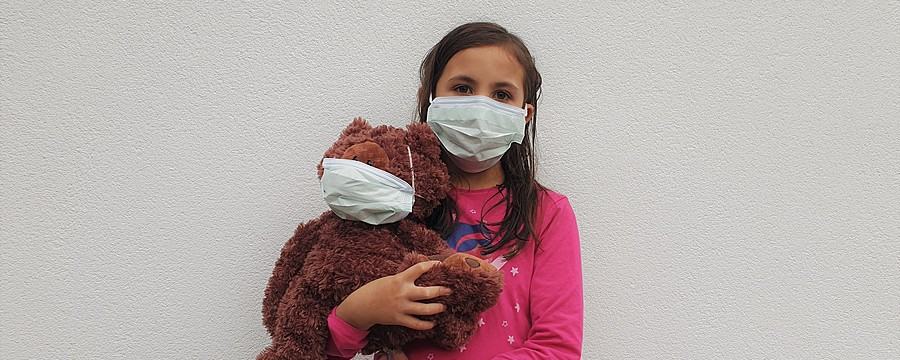Child Protection during COVID-19

Share this step
The information in this article has been specifically written as guidance for those already working in an authorised child protection case management role. It can also be used as helpful background information for other service providers in order to gain an understanding of the process.
This information on determining levels of risk to children has been taken from a number of technical guidance documents issued by child protection organisations and working groups in response to the COVID-19 pandemic. You can find these in the ‘See Also’ section at the bottom of the page.
We hope this information will be of particular help in circumstances where child protection case management loads are increasing and/or access to children is proving difficult. The guidance may also be particularly relevant when decisions have to be made about prioritising cases that need the most urgent follow up, when it is necessary to have face to face meetings with the child – and caregivers – and when this can be undertaken remotely.
On page 29 of the Inter-Agency Child Protection Case Management Standard Operating Procedures – which can be downloaded in four languages from here – you will find risk levels have been categorised as follows:
- High risk: Child is significantly harmed or at risk of significant harm or death if left in her/his present circumstances without protective intervention
- Medium risk: Child is harmed to some degree if left in her/his present circumstances without protective intervention. However, there is no evidence that the child is at risk of significant harm or death
- Low risk: Child is at risk of harm if left in her/his present circumstances without protective intervention
- No risk: Child found to be not at risk of harm or is no longer at risk of harm (but still may need access to specific services such as health, nutrition etc.)
Please note that in refugee settings, UNHCR also uses these categories of risk with one addition which is ‘Emergency’ which precedes the other four. You can find out more about these categories in Section 3 of the UNHCR Standard Operating Procedures Template. This Template can be found in the UNHCR Best Interest Procedure Standard Operating Procedures for the Implementation of BIP Toolkit which you can find in the ‘Downloads’ section below.
As UNHCR stress in their Best Interest Procedure (BIP) Guidelines, prioritisation does not mean that addressing one protection risk is more important than the other, or disregarding one child’s experience of risk over those of another child. But the specific vulnerabilities and risks of some children, and in times of limited resources, may mean those in situations of more imminent or severe risk have to be given prioritised attention.
The Alliance for Child Protection in Humanitarian Action has issued a document on COVID-19 Child Protection Case Management Guidance. This guidance provides information for supervisors of child protection caseworkers and includes working with, and support of, caseworkers during the COVID-19 pandemic. This includes taking steps to review current and new cases on a case by case basis. This meeting could occur remotely if ‘stay at home’ orders are in place. Further information adapted from this guidance on reviewing child protection cases – as well as guidelines developed by the Child Protection Case Management Taskforce in Lebanon which we invite you to read here – includes:
For all cases
Start with high risk cases, using the following questions to guide discussion:
- What is the current situation of the child? Have there been any minor or major changes that affect the child and/or their caregivers?
- What is the likelihood that the child’s safety and well-being will worsen due to the current crisis? What are the specific risks?
- What type of support does the child require, and how will the safety of the caseworker and the child be considered as part of each action (document in case plan)?
Case management services may have to be modified depending on the situation in your location. Consider:
- Face-to-face meetings if needed and safe. If the caseworker can no longer visit the home or any other place a child is living, establish a safe place to meet. Make available personal protective equipment (PPE); if a face-to-face meeting is planned, call in advance to determine if the child, caregiver or anyone else in the property is experiencing COVID-19 symptoms or believes they have been exposed to the virus
- Using phone communication if accessible to the child and/or caregiver as alternative and/or supplementary to visits
- Working with trusted community members, volunteers or child protection group members to provide follow-up if safe and relevant to do so
- Creating or updating safety plans for the child and/or a caregiver and/or other trusted adult
- What resources are needed to implement any proposed activities
- Allocate a back up case worker if the primary caseworker falls ill and introduce to the child and/or trusted adult.
For existing high risk cases
- Maintain case management support for all high-risk cases
- Depending on staff safety and the availability of Personal Protective Equipment (PPE), conduct face to face visits with the most urgent/life threatening cases. Think about how the purpose of the visit can be achieved whilst maintain a recommended physical distance of 2 metres
- If the caseworker cannot visit, identify who within government or another child protection agency can provide immediate support
- Ensure that children and caregivers know how to contact the caseworker in the event of an emergency.
For existing medium and low risk cases
- Cases should be reviewed and follow-up needs prioritised based on assessed needs
- Caseworkers’ availability and contact information should be shared with child and/or caregiver and/or trusted adult
- Use phone follow up if required, and explore ways for safe community support and follow-up options.
For new case loads
Adapt case management criteria that considers:
- Family or other primary caregiver and/or a child is directly impacted by COVID-19: children and caregivers’ increased distress
- family separation and isolated children without appropriate care (alone at home due to caregivers’ illness, children in observation or treatment centres)
- children who have lost their primary care giver (death due to the illness), child survivors of the illness and potential rejection in family or community
- unaccompanied and separated refugee, migrant and internally displaced children
- children in detention
- street connected children
- Family or other primary caregivers and/or a child indirectly impacted by COVID-19 due to a range of different child protection risks
- Ensure that children and caregivers know how to contact the caseworker in the event of an emergency
- Review or establish new protocols specific to COVID-19 situation for identification and the intake of new cases
- Consider how confidentiality of shared information will be maintained
The ‘See Also’ section below has links to other reading material that may be of interest to you.
Share this
COVID-19: Adapting Child Protection Case Management

COVID-19: Adapting Child Protection Case Management


Reach your personal and professional goals
Unlock access to hundreds of expert online courses and degrees from top universities and educators to gain accredited qualifications and professional CV-building certificates.
Join over 18 million learners to launch, switch or build upon your career, all at your own pace, across a wide range of topic areas.
Register to receive updates
-
Create an account to receive our newsletter, course recommendations and promotions.
Register for free







